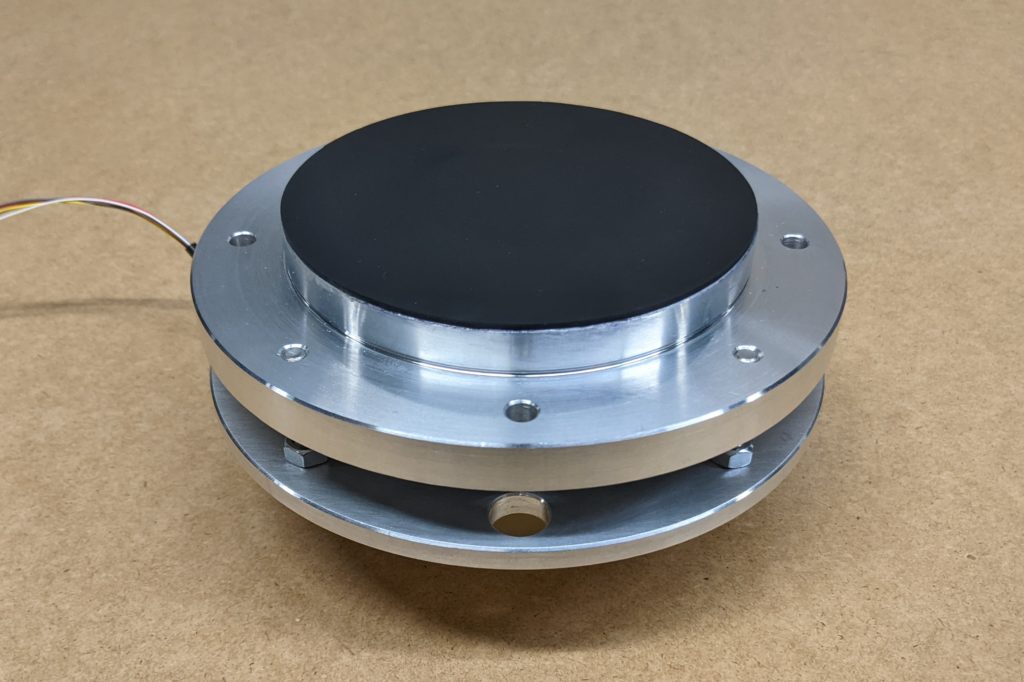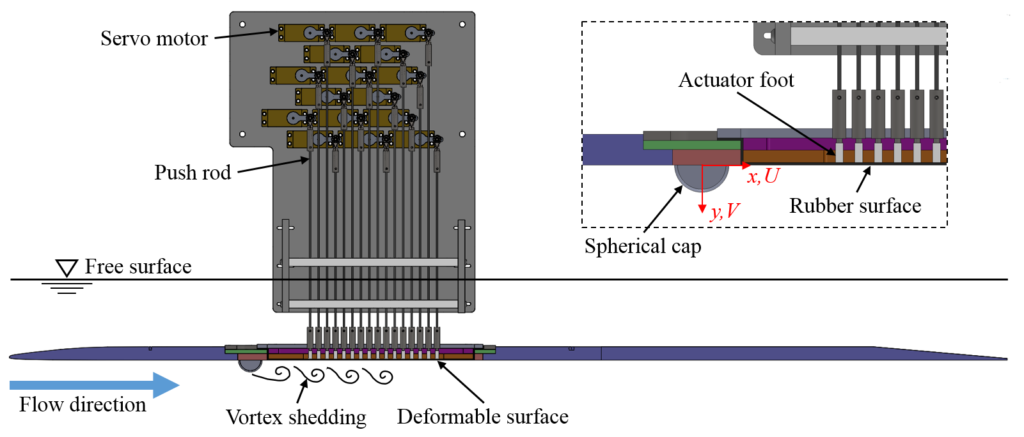Active Control of Turbulence
Adaptive control of vortex shedding using piezoelectric flaps
Vortex shedding is an unsteady flow phenomenon characterized by the formation of large vortices in the wakes of bodies that are not sufficiently streamlined. These vortices produce drag forces, acoustic noise, and vibrations, and therefore vortex shedding is generally undesirable in engineering applications. We have therefore developed a novel actuation strategy for controlling vortex shedding in the wake of a simple airfoil model using oscillating piezoelectric flaps. The strategy is capable of both amplifying and completely suppressing the vortex shedding process depending on how the flaps are used to interact with the wake. An adaptive controller was also implemented using pressure measurements at the trailing edge. This controller is capable of automatically seeking an optimal actuator input for suppressing vortex shedding, even in the presence of changing flow speeds. The full details are published in Gibeau et al. (2019).

Control of turbulent boundary layers using active surface deformations
Turbulent boundary layers form in engineering systems when fluid flows over an external surface, for example the surface of an aircraft or a wind turbine blade. These turbulent layers result in drag forces, acoustic noise, and vibrations, all of which are undesirable. One possible solution for suppressing these unwanted side effects is to target the turbulence-producing motions in the flow with a control strategy. However, the currently available actuators for flow control leave much to be desired. We are therefore exploring a new actuation strategy: the use of active surface deformations. We have developed an “active surface” and deployed it in laminar and turbulent boundary layers to investigate how it affects the flow. Our results indicate that the actuation strategy is capable of producing both low- and high-speed motions which can potentially be used for flow control applications. The full details of this work are currently under review.
Active surface high-speed recording

Active surface top
Active surface PIV animation
Feed-forward Control of Vortices using Real-time PIV
A novel system for investigating active flow control techniques of vortices shed in the wake of a spherical cap is being pursued. Real-time velocity field measurements are captured by a real-time particle image velocimetry system and fed to control algorithms which direct the actuation of an actively deformable system in the wake of the spherical cap. This project represents an early step towards the development of control techniques for more complex and turbulent flows.

Experimental apparatus developed for investigating active flow control techniques of vortices shed in the wake of a spherical cap immersed in a laminar boundary.
Views of the developed actively deformable surface approximating a travelling sine wave.

Schematic showing the real-time velocity field measurement region relative to the actively deformable surface.
